- Administrator
- Albums and Singles
On the aptly titled Improvisations for Strings and Electronics, Marielle Jakobsons and Agnes Szelag (Myrmyr) team up with cellist Helena Espvall (of Espers) on a series of, you guessed it, improvisations for strings and electronics. Recorded in Oakland, CA, Jakobsons and Szelag created graphic scores for the occasion.
A little while ago Agnes asked me which bands I’d compare this album to. I couldn’t think of a single one. Not even the more classically oriented works of someone like Godspeed! You Black Emperor really come close.
What did immediately leap to mind were the string quartets of contemporary composers Gloria Coates, Morton Feldman, Per Nørgård, and Henryk Górecki. As well, some of the more challenging, discordant and visceral works of Arvo Pärt bear a similarity to the sinuous, winding melodies and stunning tonal landscape created here.
Ethereal and rapturous beauty tempered with sinister, creeping danger looming ominously in the shadows.
CD. 5 tracks / 43:13 mins. Multi-layered handmade transparent outer-sleeve, lino-block printed envelope. Limited edition of 100.
More information here.

Read More
- Administrator
- Albums and Singles
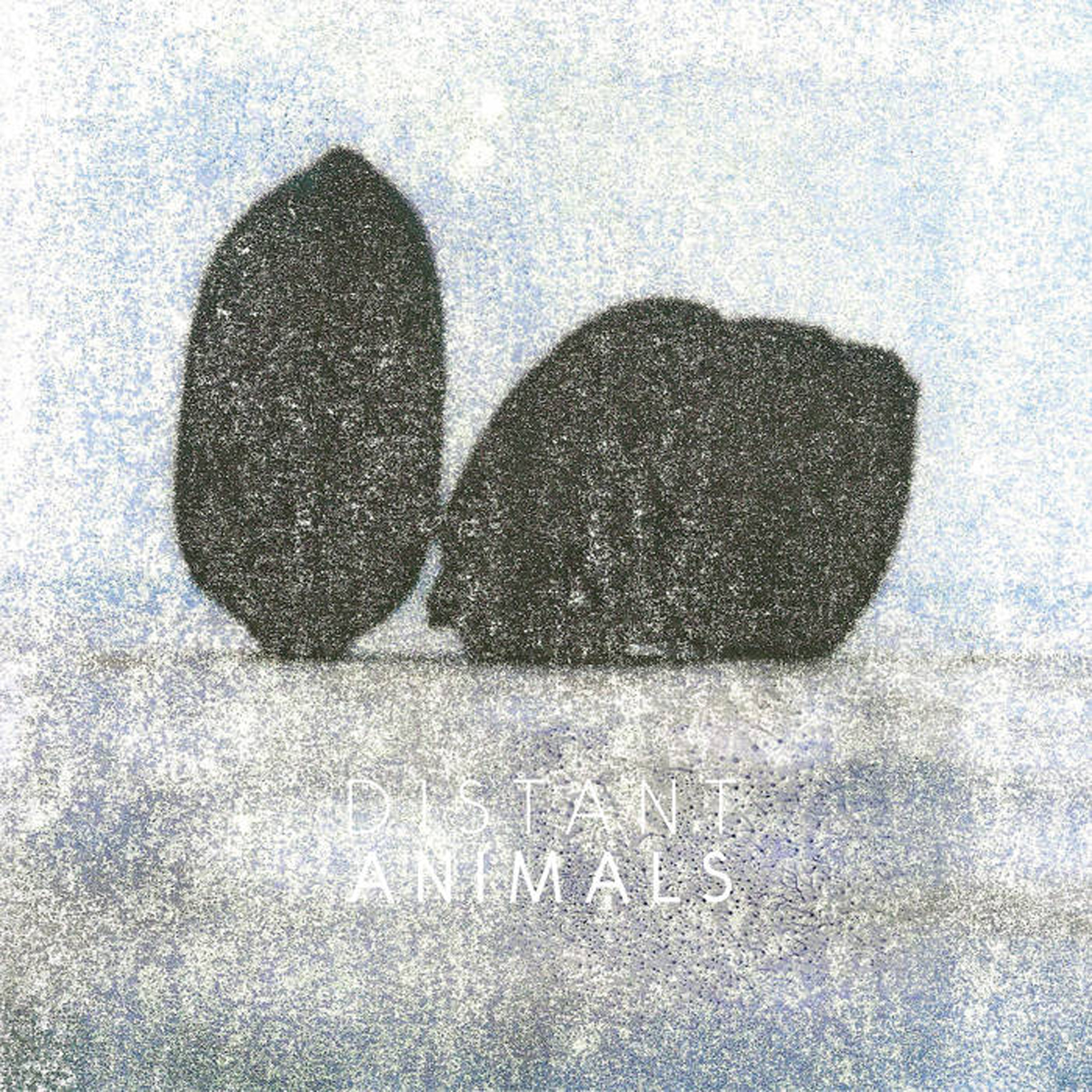
Over the last several years, Hallow Ground’s eclectic curatorial instincts have hit the mark so frequently that I am now deeply curious about anything they release from any artist completely unknown to me. While I do quite not love everything they release, they have unearthed quite a few lost post-industrial gems and are often far ahead of the curve with promising new artists or projects. This project from Daniel Alexander Hignell very much falls into the latter category, wielding the conceptual complexity of a less mischievously arch Hafler Trio to craft a seismic drone opus that falls in roughly the same league as greats like Eliane Radigue and Phill Niblock. The album's second half is admittedly a bit less revelatory, but it does not matter because the opening piece is such an absolute monster.
According to Discogs, this is arguably Distant Animals' debut, but that is somewhat deceptive, as Hignell has been releasing albums under his own name and running the Distant Animals (in a Forest of Signs) imprint for the last several years.Both perversely and appropriately, he completed a doctorate in composition in 2017 and Lines is the first "sonic response" to the research he did on the social function of art-making.That academic background definitely figures heavily into Lines' conceptual underpinning, as it is based on a 130-page text score and includes four postcards documenting a "land-art intervention" related to the text, as well as a print from Layla Tully that "responds to the album's central theme - materiality, substance, emergence, and the process of 'line-making.'"In my experience, album descriptions in that vein generally do not bode well, but there are occasionally some wonderful exceptions like this one.Much like a Merzbow album about, say, bears sounds a hell of a lot like a Merzbow album about eucalyptus trees to any casual listener, those themes are not particularly evident in the actual music.Rather, they just provided the necessary inspiration for Hignell to get to an intriguing place creatively.It is an amusing bit of irony that it took all that research and a doctorate in composition to get to what is essentially a one-note piece (the aptly titled "Pure Drone"), but it also makes complete sense, as the piece is a master class in patience, control, dynamics, and deliciously blackened textures.
"Pure Drone" begins in appropriately simple and pure fashion, as a sustained modular synth tone gently throbs and slowly sweeps.Gradually, however, a cloud of eerie overtones starts to cohere in the periphery, while the drone itself builds into an increasingly shuddering, scorched, and infernal-sounding behemoth.The sheer density and menace of the piece is truly remarkable, as it feels like a slow-motion earthquake is tearing open a portal to hell and that portal is then channeling some kind of demonic version of Tuvan throat singing.In a perfect world, "Pure Drone" would just keep amassing elemental power until my house collapsed around me and the falling roof squashed my stereo, but Hignall sadly lacks the supernatural powers necessary to pull that off, so the piece instead just gradually fades away after about 20 minutes.That presents a bit of problem for Lines, as very little could possibly follow "Pure Drone" and not seem comparatively anticlimactic.Nevertheless, Hignall gamely tries to do the impossible with "Lines Made By Walking," which roughly heads in the opposite direction of its predecessor.Whereas "Pure Drone" was all about focused power and crushing, all-enveloping forward motion, "Lines Made By Walking" starts as a heavy drone and immediately begins dissolving into a roiling morass of sputtering and blurting synth tones and crackling, shorting amp noise.Eventually, it settles into a gently buzzing and beeping ambient reverie, but quickly disintegrates into static before reemerging for a visceral final act that sounds like a nightmarish black mass: deep, distorted bell-like tones mingle with gnarled howls that sound like a field recording of damned souls being played back on a dying record player.
As great as that sounds, however, it does not come close to approaching the majesty of "Pure Drone," as it feels bizarrely fragmented and scattershot, as if several disparate pieces were edited together with varying degrees of success.In fact, the clangorous unpredictability resembles something that might turn up on an early electronic music comp, like a decent but dated Morton Subotnik piece.That is certainly not bad company to be associated with, particularly when Hignell seems to share the same oversized passion for theory and experimentation that drove so many of the late 20th century's iconic composers.Falling within that continuum is nice, but it is definitely a far greater achievement to build on that tradition in a way that feels like a fresh and exciting new chapter.With "Pure Drone," Hignall nails the latter quite decisively.He pulls a very big and improbable rabbit out of his hat with this album, emphatically demonstrating that hyper-minimalism delivered with earth-shaking intensity still has the power to surprise and delight a listener who has been consuming a steady diet of drone masterpieces for years.
Read More
- Administrator
- Albums and Singles
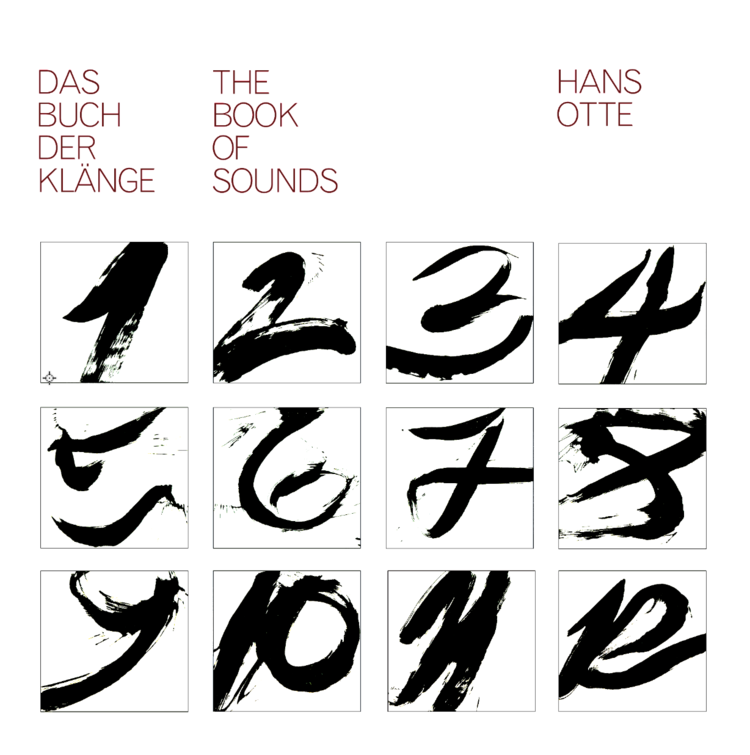 The Book of Sounds was composed between 1979-82, when Hans Otte was reflecting on his previous artistic output, by distilling hundreds of pages of improvisations he had written down, and looking ahead to a future dealing with his cancer diagnosis. The work was originally released in 1984 and consists of 12 solo piano pieces which blend older and newer traditions: the intimacy and poetic style of Chopin and the pantheistic eulogies of Debussy as against the Eastern rhythms and pointillist pulses familiar to Reich and Glass. Yet these influences are subsumed beneath an artistic vision: music stripped to the bone and laid open to deep listening and personal reflection. There is neither great variation nor exact repetition in these 12 tracks. Instead there is a deep exploration of sound, the sound of an acoustic piano, with great emphasis on harmony.
The Book of Sounds was composed between 1979-82, when Hans Otte was reflecting on his previous artistic output, by distilling hundreds of pages of improvisations he had written down, and looking ahead to a future dealing with his cancer diagnosis. The work was originally released in 1984 and consists of 12 solo piano pieces which blend older and newer traditions: the intimacy and poetic style of Chopin and the pantheistic eulogies of Debussy as against the Eastern rhythms and pointillist pulses familiar to Reich and Glass. Yet these influences are subsumed beneath an artistic vision: music stripped to the bone and laid open to deep listening and personal reflection. There is neither great variation nor exact repetition in these 12 tracks. Instead there is a deep exploration of sound, the sound of an acoustic piano, with great emphasis on harmony.
As the tracks are only titled by number all expectation is removed, there is no imagined narrative to follow, or prescribed scenes to imagine. What remains is an opportunity, to follow the sounds to a place where nothing can obscure them. The Book of Sounds documents Otte’s great restraint and focus in creating music both serene and dynamic. As I listened I felt that nothing was forced or lacking in confidence, all seemed to have a natural flow as (in my mind) atoms danced, flames flickered, icicles dripped, silence reigned, waves rolled. Then I began to wonder if there are twelve pieces in reference to twelve tone chromatic scale serialism, the twelve months of the year according to Gregorian, Hindi and other calendars, or something else.
It has been said that Otte is best known for his administrative and promotional work on behalf of others. Indeed, from 1959-84 as head of the music department at Radio Bremen, and by founding the Pro Musica Nova festival, Otte introduced such American artists as John Cage, Terry Riley, Steve Reich, La Monte Young, and others to European audiences. Yet The Book of Sounds can stand with the work of any of those composers. Otte’s goal was to create a work which invited close observation for ‘all those who want to draw close to sound, so that, in the search for the sound of sound, for the secret of life, one’s own resonance is discovered.’
It is not too pretentious to suggest that he achieved that goal. Oddly the years 1979-82 frame a definite ending and beginning period in my own life and it is strange to consider that at the same time in Northern Germany Hans Otte was hard at work on this great recording. He survived his cancer diagnosis and lived until 2007.
 
 
Read More
- Administrator
- Albums and Singles
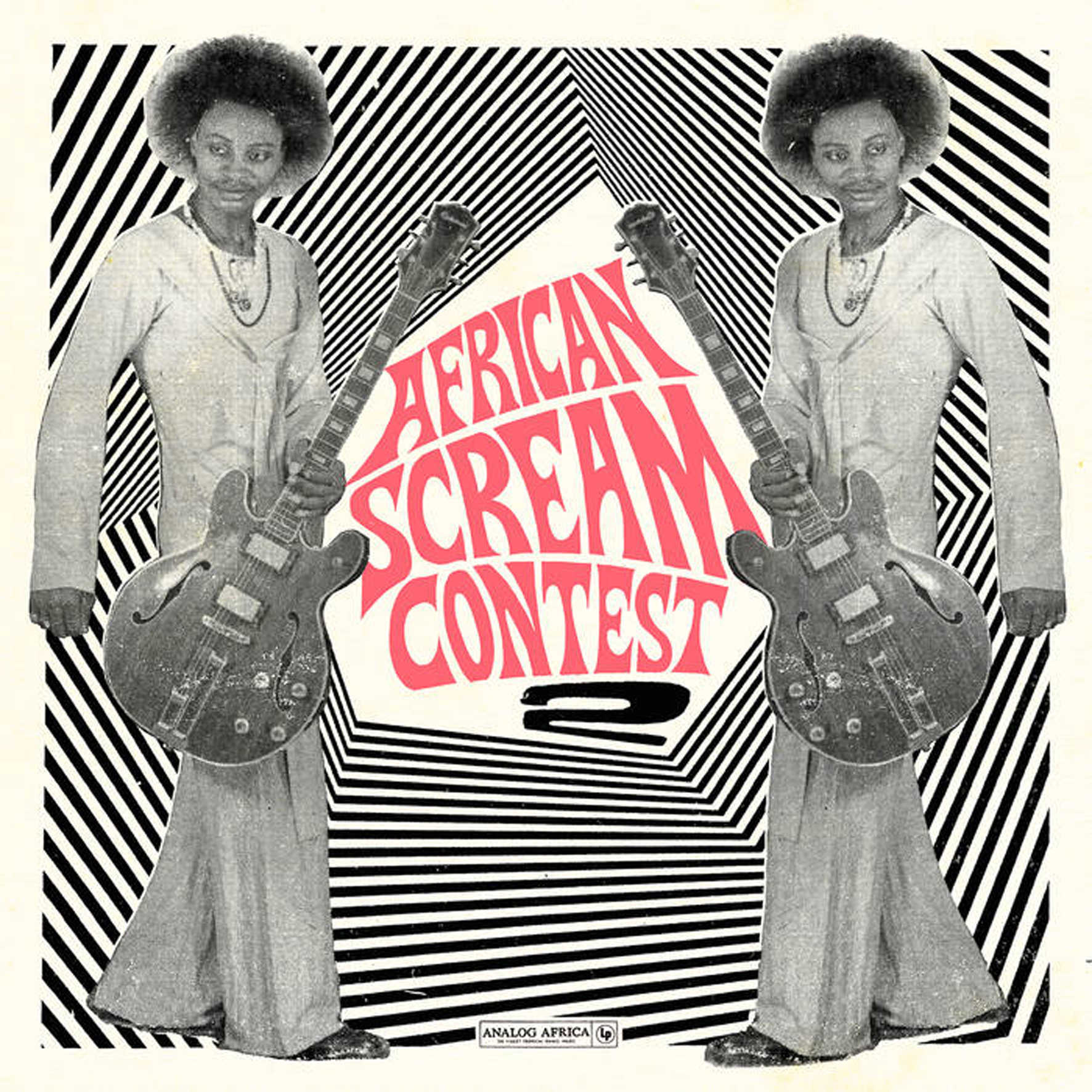 Ten years ago, Analog Africa released the landmark African Scream Contest, an album that instantly established the fledgling label as one of the most intriguing and distinctive imprints in the global crate-digging milieu. It was not exactly a perfect album, but it was certainly a perfect and resounding statement of intent, plunging deep into an eclectic vein of forgotten African funk outside the celebrated regions documented by Soundway, Strut, and Ethiopiques. To celebrate that auspicious anniversary, Samy Ben Redjeb has released one hell of a sequel. Sadly, it will not make quite the same impact as its predecessor, as a new label can only burst onto the scene once, but African Scream Contest 2 is actually the superior album in many ways. Admittedly, some people will be disappointed that a bit of the weirdness and rough edges have been sanded away, which is a category that I would normally expect myself to fall into. Redjeb has gotten significantly better at his job over the last decade though and that definitely shows here, as this latest installment is pared down to a wall-to-wall feast of tight grooves and great hooks that never overstays its welcome.
Ten years ago, Analog Africa released the landmark African Scream Contest, an album that instantly established the fledgling label as one of the most intriguing and distinctive imprints in the global crate-digging milieu. It was not exactly a perfect album, but it was certainly a perfect and resounding statement of intent, plunging deep into an eclectic vein of forgotten African funk outside the celebrated regions documented by Soundway, Strut, and Ethiopiques. To celebrate that auspicious anniversary, Samy Ben Redjeb has released one hell of a sequel. Sadly, it will not make quite the same impact as its predecessor, as a new label can only burst onto the scene once, but African Scream Contest 2 is actually the superior album in many ways. Admittedly, some people will be disappointed that a bit of the weirdness and rough edges have been sanded away, which is a category that I would normally expect myself to fall into. Redjeb has gotten significantly better at his job over the last decade though and that definitely shows here, as this latest installment is pared down to a wall-to-wall feast of tight grooves and great hooks that never overstays its welcome.
Sadly, I do not have the physical version of this album, so I am certain that I missing out on a characteristically improbable and colorful backstory.I do know, however, that Redjeb was able to track down all of these artists primarily because he enlisted the aid of Lokenon André from Les Volcans.Like Redjeb's beloved Orchestre Poly-Rythmo and a couple of other bands, André is a veteran from the first installment and makes a well-deserved return, as his "Glenon Ho Akue" boasts the most endearingly lurching, rolling, and wonderfully off-kilter groove on the entire album.Presumably, André and Les Volcans were able to pull off such rhythmic complexity because they were a "ruthlessly disciplined military band," which brings me to why Lokenon was the ideal person to track down all of the other artists for this collection: he had been trained by the KGB.Hopefully, the rest of the album’s participants have a less morally complex past, yet bizarre details like a Russian-trained Afrofunk mercenary are a large part of what sets Analog Africa compilations apart from everyone else: they are part labor of love, part myth-making, and they revel in all the weird details and amusing anecdotes behind the music.There is certainly scholarship and cultural anthropology happening here as well, but it is almost beside the point.Analog Africa compilations are first and foremost an awesome party thrown by someone with exquisite taste.Nobody in '70s Benin was stroking their beard and noting ambitious time signatures when these bands played–they were dancing and having a great time.
Notably, the fabled Vodoun/ancestral Beninese rhythm element is not nearly as pervasive on this collection as I might have expected, though there are some notable exceptions.For example, Orchestre Poly-Rythmo’s "Moulon Devia" is essentially a straight-up four-on-the-floor disco thump and it is easily one of the album's most smoking grooves.While the mystical history of Benin and the resultant vibrant, unusual percussion are certainly recurring and important themes and make a good story, they are almost eclipsed by the less interesting fact that Benin was improbably teeming with bands that had incredibly tight and fluid rhythm sections.That is what truly stands out the most on the album.The scene also boasted some rather charismatic and "fashion-forward" characters as well.One such oversized personality collides beautifully with tradition and an absolutely killer band on one of the album's final songs, "How Much Love Naturally Cost," as Gnonnas Pedro delivers an amusing monologue over a rolling percussion vamp and an effortlessly infectious bass line.As far as I am concerned, Pedro and the bassist in His Dadjes Band are the breakout stars of the album, as that song is the one moment where an ensemble is truly firing on all cylinders at once and doing so gloriously.There are lot of other great moments strewn throughout the album, however, as it only takes one brilliant hook or performance to whip up one hell of a monster groove.That said, Stanislaw Tohon's "Dja Dja Dja" comes quite close to being yet another glimpse of sublime perfection, masterfully combining a wonderfully shuffling pulse with an stuttering and serpentine guitar motif and a stellar brass section.Elsewhere, El Rego Et Ses Commandos contribute yet another highlight with the soulful, sensual, and latin-tinged "Gangnidodo."
It is worth noting that any great compilation that dives into an underdocumented era or region unavoidably becomes a deceptive bit of revisionist history, either retroactively creating a previously non-existent scene or selectively editing one that did exist so it fits the curator's taste.As such, African Scream Contest 2's 14 songs spanning an entire country's musical output over nearly two decades is far from a representative retrospective.In the right hands, however, such an endeavor can conjure up a truly wonderful illusion, which is exactly why Redjeb's handiwork is such a delight time and time again.This collection brings to light a hugely appealing alternate timeline to the American funk, disco, and soul golden age in which structure is a very fluid and organic thing, eclectic rhythmic adventurousness thrived, and everything sounded like it was recorded by Steve Albini rather than smothered in smooth production.Admittedly, there is a tendency towards freewheeling indulgence as well, but excursions like an extended, wandering organ solo are perfectly welcome if they occur over a suitably vibrant rhythmic backdrop (as nearly every Fela Kuti album illustrates beautifully).African Scream Contest 2 is a sweaty, quirky, fun, and effortlessly sensual album.I suppose that can be said about nearly every Analog Africa compilation to some degree, but the unusually high hit-to-miss ratio of this one makes it one of the best.
Read More
- Administrator
- Albums and Singles
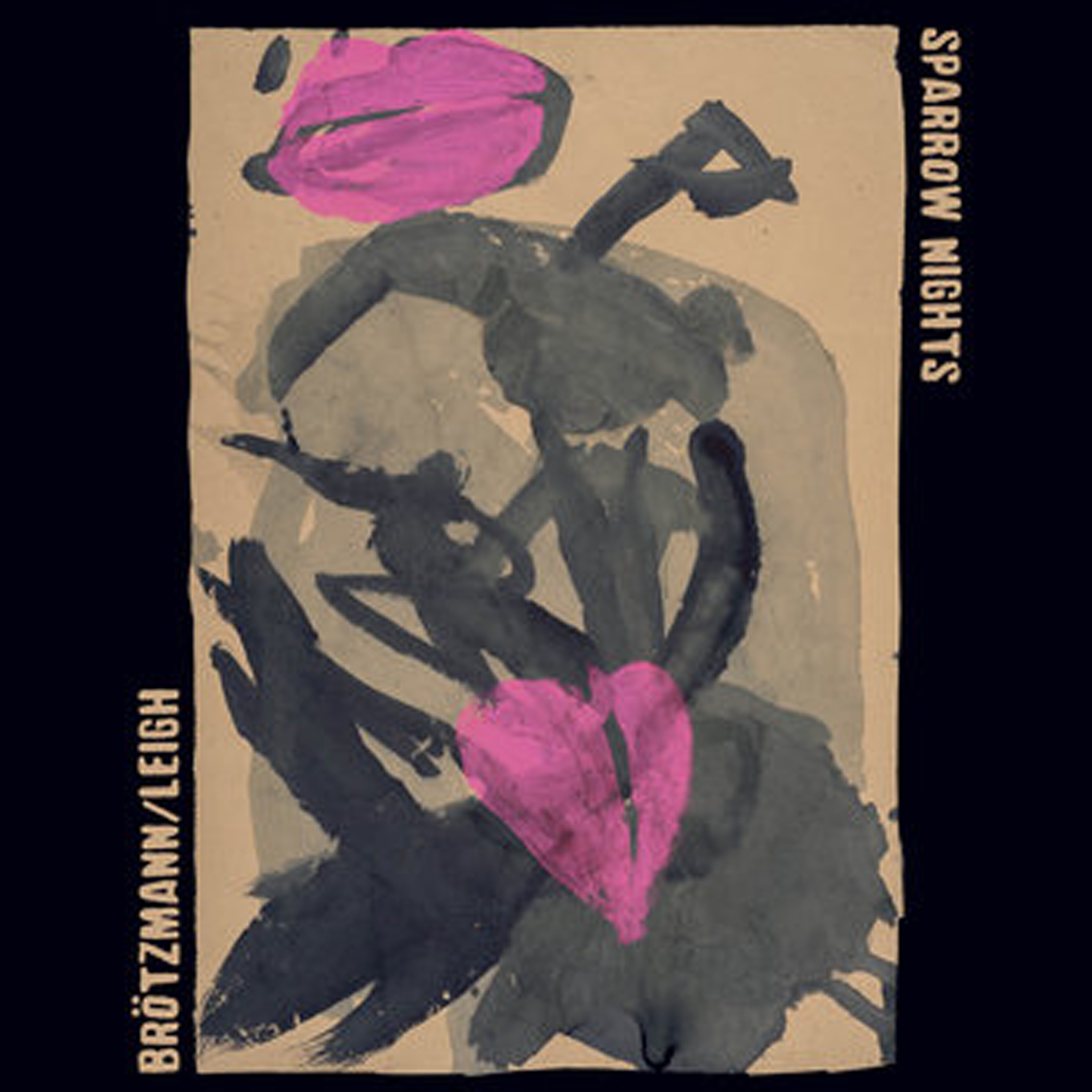 This first studio album from the formidable duo of Peter Brötzmann and Heather Leigh took me an unexpectedly long time to warm to, as it was not at all what I was expecting (skwonking and rapturous free-form flame-throwing). Instead, Sparrow Nights is something considerably more stark, novel, and challenging, unfolding as a uniquely surreal fantasia of alternately gnarled and lyrical saxophone passages over a disorientingly woozy and shifting bed of blurred pedal steel. That said, there are a few comparatively volcanic eruptions of catharsis to found as well, yet the true genius of this album lies primarily in its sprawling and immersive strangeness. As a cumulative and complete work, Sparrow Nights achieves the transcendent indulgence of prime My Cat is an Alien, leaving me feeling weirdly drugged, disoriented, and transformed by the time the last notes fade. That is not a particularly lucrative or instantly gratifying niche, obviously, but Sparrow Nights is more of a legitimate event than it is a mere album.
This first studio album from the formidable duo of Peter Brötzmann and Heather Leigh took me an unexpectedly long time to warm to, as it was not at all what I was expecting (skwonking and rapturous free-form flame-throwing). Instead, Sparrow Nights is something considerably more stark, novel, and challenging, unfolding as a uniquely surreal fantasia of alternately gnarled and lyrical saxophone passages over a disorientingly woozy and shifting bed of blurred pedal steel. That said, there are a few comparatively volcanic eruptions of catharsis to found as well, yet the true genius of this album lies primarily in its sprawling and immersive strangeness. As a cumulative and complete work, Sparrow Nights achieves the transcendent indulgence of prime My Cat is an Alien, leaving me feeling weirdly drugged, disoriented, and transformed by the time the last notes fade. That is not a particularly lucrative or instantly gratifying niche, obviously, but Sparrow Nights is more of a legitimate event than it is a mere album.
It is always interesting to see what happens when multiple visionary/iconic artists with distinctive individual voices come together, even though the results generally tend to be rather underwhelming or forgettable due to time-constraints or lack of chemistry.At best, the result is usually an explosive improvised cacophony that I listen to just once or twice.Despite being disappointed so many times, I still find such pairings too enticing to resist, as every now and then an album like Sparrow Nights turns up and knocks me sideways.Well, not exactly like Sparrow Nights, as this is a one-of-a-kind opus–I am speaking more of a collaboration that offers something completely new rather than the uneven mashing together of two aesthetics.Notably, this album is not even all that similar to the pair's previous collaborations.A large part of that is due to finally recording in a studio, as the duo are able to express considerably more nuance and varying shades of emotion than would be possible in a live setting.However, it is also clear that Brötzmann and Leigh's years of collaboration have blossomed into something wonderful that can only be birthed from artists on the same intuitive wavelength.Trost colorfully describes Sparrow Nights as "cold-forged minimalist blues" and that is probably as apt as anything that I could come up with for this near-uncategorizable album, as long as one's definition of minimalist blues is broad enough to include someone like Jandek.There is definitely an uncluttered intimacy and simmering emotional punch to these recordings, even if they bear no resemblance to conventional blues in any structural way.The essence is what matters and Brötzmann and Leigh channel it beautifully.
For the most part, Brötzmann sets up camp in the foreground and handles all of the heavy lifting melodically.There is quite a lot of variety to what he plays though, as he cycles through an array of different clarinets and saxophones and fluidly moves from sensual melodies to strangled howls to fluttering cascades of notes as the album's mood shifts.As his playing is characteristically and invariably inspired, the degree to which each of these pieces succeed is largely dependent on the beauty or lysergic otherworldliness of Leigh's foundation and how the two threads intertwine and interact.The most instantly gratifying pieces tend to be the ones where Leigh approximates some sort of shivering and shimmering slow-motion dream pop, as she does with the glimmering arpeggios of the opening "Summer Nights" and the lingering, quivering chords of "This Word Love."Most pieces fall into that vein, but Leigh breaks up her approach a bit with the stuttering, wobbling single notes of the title piece and the distorted, howling sustained tones of "This Time Around" (the latter almost sounds like she gave "Here Comes the Bride" the Jimi Hendrix "Star-Spangled Banner" treatment).Picking a clear highlight is extremely difficult, however, as the album feels like a mosaic painstakingly assembled from disparate fragments: the pieces all feel like ephemeral vignettes of varying lengths that are not meant to fully stand on their own.Further complicating matters is the fact that the vinyl and digital/CD versions of Sparrow Nights are radically different albums, as the latter includes ten songs rather than six.Notably, the four additional pieces do not feel like tacked-on bonus tracks so much as they feel like a continued and deeper descent into the album’s hypnagogic, reality-dissolving spell.
Thankfully, that dramatic difference does not create a serious predicament for fans, as Trost makes it easy to get the digital version along with the vinyl, yet it does present two very different listening experiences: a concise and focused selection of (mostly) the more melodic pieces versus a far more indulgent dive into darker and more hallucinatory terrain.For me, the latter is easily the superior album, as late album gems like "At First Sight" and "The Longer We're Apart" make a much more decisive break with reality and achieve a unique seasick nightmarishness.Admittedly, a full album of a pedal steel guitar being abused with such violent vibrato and relentlessly sliding pitches would probably be too overwhelming and mercilessly uncomfortable to take, yet the darkly ecstatic delirium of "The Longer We're Apart" is glorious final act to Sparrow Night’s long, slow, and mesmerizing descent into strange waters (it is like being enveloped in a mindfucking swarm of extra-dimensional bees).There are certainly great Peter Brötzmann albums and great Heather Leigh albums out there, and probably a number of great Brötzmann/Leigh live performances as well, but Sparrow Nights is something totally different than all of them.And at its most challenging heights, it is not much like anything else at all.That is a hell of an achievement.
Read More
- Administrator
- Albums and Singles
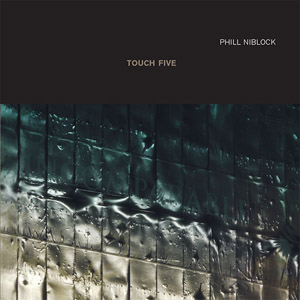 Phill Niblock is an artist that, despite his penchant of expansive, subtle and nuanced recordings, always seems to make every release an epic one. His fifth album for the label (hence the title) is yet again another double disc one that holds only five compositions. Although it takes a conceptually similar approach to those albums, namely Niblock's use of layered instrument drones with microtonal adjustments to pitch, it still has a different feel when placed alongside his other releases.
Phill Niblock is an artist that, despite his penchant of expansive, subtle and nuanced recordings, always seems to make every release an epic one. His fifth album for the label (hence the title) is yet again another double disc one that holds only five compositions. Although it takes a conceptually similar approach to those albums, namely Niblock's use of layered instrument drones with microtonal adjustments to pitch, it still has a different feel when placed alongside his other releases.
The first disc is comprised of two compositions for classical stringed instruments."FeedCorn Ear" (for cello) is unsurprisingly made up of long, bowed notes that seem to stretch into eternity with Niblock's post-production consisting of a very light touch, but one that emphasizes the hidden microtones and natural audio variations.Arne Deforce's playing deserves recognition as well, as his steady hand enhances the purity of sound that Niblock deconstructs. The different layers rise and fall, twisting and turning like braided wires of pure sound into a massive sonic expanse.Toward the end of its 30 minute duration, only the slightest traces of cello remains and instead is simply a cloud of delicate tones and sound. In total it is a lighter work compared to Deforce's performances on "Poure" and "Harm" two cello compositions on previous Niblock releases.
The second piece, "A Cage of Stars," is for electric harp and performed by Rhodri Davies with both a traditional bow and an e-bow.Leading off with a bit of sparkling noise, it soon settles into a sustained wall of microscopically shifting tones that build atop one another.Towards its conclusion there is a much more significant emphasis on the lower end of the spectrum, which again ends it in a different place than it began.Even though it is just a single performance, the layering and tweaking to the final results in a composition that sounds as if it were performed by an entire orchestra.
Disc Two consists of three different performances of the 23 minute composition "Two Lips" by three different guitar quartets.Each player performed the score ten times in a single session with the faintest of tonal variations.The first, performed by Zwerm, is surprisingly inorganic sounding at first blush due to a heavy use of effects, but eventually takes on a more traditional electric guitar sound.The fuzzy leading tones trade off with each other with each player shifting from lower to high register drones being produced.
The second performance, by the Dither guitar quartet, begins with a more intense approach, with organ like wavering sustains cutting through the tonal mass sharply.Towards its conclusion the liberal use of flange and chorus effects imbues it with a distinct feel, getting a bit more psychedelic in the process.The final performance, by the Coh Da quartet (Ad Hoc, featuring Robert Poss and Susan Stenger) comes across as even more abstracted from guitar, with each player producing passages resembling organ and harmonium drones than traditional electric guitar.
Phill Niblock's work is often challenging, and Touch Five is no exception.It requires a focused and dedicated ear to absorb the slow changes and evolution in these long compositions.For those with the time and the patience though, his work rewards like no other in its purity and hidden complexity.
samples:
 
Read More
- Administrator
- Albums and Singles
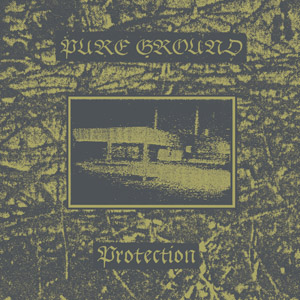
Chondritic Sound label head Greh Holger initially began work as a harsh noise artist, but like many in that field, his tastes and art has changed and evolved, and on this pair of new releases that is completely evident. With both his synth pop project Pure Ground becoming a tighter band and his solo noise guise Hive Mind displaying even greater compositional tactics, he is definitely at the top of his game.
Pure Ground, which is Holger with Jesse Short, has only produced two EPs (this being the second), and a 7 inch single thus far, but even with that limited discography the duo are honing their craft rather quickly.Rather than being simply a showcase for vintage electronic instrumentation, like many in the minimal wave revival scene, "Atlantic Wall" is truly a hook laden aggressive pop song.The bass line that shifts from a catchy melody to a curt thump pairs perfectly with the snappy drum machine beat and noisy synth lead.The verse/chorus/verse structure is rather simplistic, but in the way that all good pop songs should, and leads to a memorable chorus that is extremely memorable.
The three remaining songs are just as good, but not in the same infectious way.The taut bass and shimmering synth pads of "From Outside" and serpentine lead and buried vocals of "With the Old Ways" are great in their own right, however, even if they do not have quite the same earworm quality.Pure Ground go darker and more dissonant on the closing piece, "Sacrificed to Purpose," which is more dissonant than the preceding with its immediate machinery pounding beat.With a shrill lead and everything bathed in liberal layers of reverb, it embraces texture more than hooks, and excels at its goal while making a fitting tribute to mid 1980s industrial.
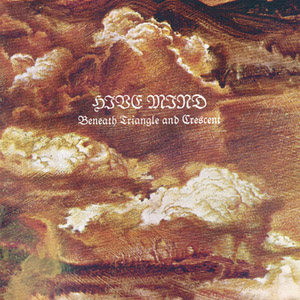 Hive Mind does not focus as much on rhythm and musicality on Beneath Triangle and Crescent, but they express more structure than previous, harsh noise focused works.The crackling noise and low end push of "Exodus" initially feels in league with the European school of power electronics, but soon changes.As a subtle hint of melodic synth throb begins to become prominent, the noise becomes darker and more oppressive before retreating.The remaining dissonance and depressive electronic melody feels more akin to Maurizio Bianchi's earlier work than it does that of Genocide Organ or the like.
Hive Mind does not focus as much on rhythm and musicality on Beneath Triangle and Crescent, but they express more structure than previous, harsh noise focused works.The crackling noise and low end push of "Exodus" initially feels in league with the European school of power electronics, but soon changes.As a subtle hint of melodic synth throb begins to become prominent, the noise becomes darker and more oppressive before retreating.The remaining dissonance and depressive electronic melody feels more akin to Maurizio Bianchi's earlier work than it does that of Genocide Organ or the like.
"Detritus" features a similar combination of melody and noise, with the former being more bleak and the latter harsher.Jagged, harsh sheets of distorted squeal crash and eventually take the piece back to the harsh noise days, but not before resembling an even more tortured, deconstructed version of The Cure’s Pornography.The final, side-long title piece embraces both of the extremes, with its overdriven low end and slow synthesizer sweeps giving it texture and depth.The slow build drifts back into the dour, depressive electronic territory, and keeps the harsher moments at bay for its full duration.
Between the indisputably catchy moments of Protection and depressive noise of Beneath Triangle and Crescent, Holger does not disappoint.Even with the more complex, song-oriented approach to these compositions, there remains that dirty, noisy edge of his earliest work, which goes a long way in giving these two sets of songs character and an identity all their own.
samples:
 
Read More
- Administrator
- Albums and Singles
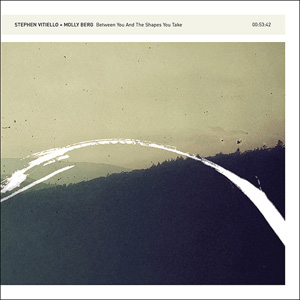 Vitiello and Berg have collaborated before on 2009's The Gorilla Variations. Like that work, the two improvise together, Vitiello primarily on guitar and Berg on clarinet and vocals. However, due to heavy amounts of processing and editing, only a ghost of untreated instruments shine through, resulting in an album rife with sadness and longing, but never in an overly bleak or depressing way.
Vitiello and Berg have collaborated before on 2009's The Gorilla Variations. Like that work, the two improvise together, Vitiello primarily on guitar and Berg on clarinet and vocals. However, due to heavy amounts of processing and editing, only a ghost of untreated instruments shine through, resulting in an album rife with sadness and longing, but never in an overly bleak or depressing way.
The moments where the core instruments can be identified are relatively far between on this album:"From Here" demonstrates some of the more overt acoustic guitar that can be heard, while "Back Again" features it only in fragmented sputters and shards. Clarinet feature prominently on "Clarinet Assembly" (unsurprisingly), accompanied by a skittering rhythm that sounds as if it were constructed from a malfunctioning guitar cable.
It is on pieces such as "Voice L-," where the instrumentation is almost impossible to discern other than Berg's vocals, leading to the album’s most enigmatic moments.What sounds like a basic repeating synthesizer sequence underscores breathy, hushed moments of voice.With the added rhythmic heartbeat-like accompaniment the piece is filled out nicely, and overall conveys an intimate, home taped like sound to it."Easy Travel" may also have some noticeable guitar, but the strength of it is due to the bassy low end textures and occasional outbursts of unidentifiable noise that overshadow the more identifiable moments.
Closing piece "Another End" may be the most significantly different sounding song to be heard here.Recorded separately from the other nine compositions that make up the album, there is less of that analog tape fuzz home recording sensibility and instead a cleaner, richer sounding mix.Hushed voices and quiet clarinet bits lay atop changing and evolving electronics and effects.It definitely fits in with the rest of the disc, but its cleaner ambience signals a colder, sadder end to the album.
Two of these ten songs are actually the work of a trio, with the addition of renowned violinist Hahn Rowe.On "Recap (With Violin)," his contributions are most blatant; producing dry, almost painful string scrapes that make for a shrill, dissonant experience while still retaining a haunting sense of melodicism.His other appearance is on the aforementioned "From Here," where his playing is kept to low key string plucks and pensive accents that blend beautifully into the other instruments.
If there is a weakness to this album as a whole, it would be the moments where it simply feels as if it is a collage of random sounds rather than an actual album.These moments are fleeting, and definitely do not overshadow the more cohesive elements, nor do they weigh particularly heavy in any one song.To some extent this is expected though, given the nature of how these songs were recorded (improvised with little or no discussion between the players beforehand). Aside from that small negative, Between You And the Shapes You Take is a beautifully melancholy, intimate piece of mystery and intrigue.
samples:
 
Read More
- Administrator
- Albums and Singles
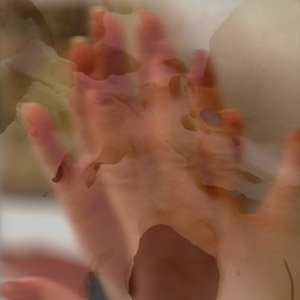
An album presented in two distinct movements, one on each side of the LP, Olivia Block's latest work at first seems like two diametrically opposed pieces, but are thematically, if not evidently from the sound, tied to one another. Based partially on the idea of presentation, both in the form of musical performance and in the sociological perception of the self, Karren has conceptual depth, but is captivating even stripped of that fact.
The A side composition, "Foramen Magnum," is the darker and more discordant of the two by far.Culled from field recordings in a multitude of public locations, such as zoos and museums from across the world, as well as orchestral rehearsals (of the piece that lies on the other side of the LP), there is a chaotic, disjointed quality throughout.Unidentifiable found sounds, crispy processed static and a menacing far off hum sets a sinister tone at the onset.
The occasionally overt smattering of applause, fragmented conversation or obvious sound of footsteps makes for a precious few moments of familiarity, but the rest is disconnected and improvised feeling.It continues to move and evolve for its 20 minute duration, never really fully settling into a single mood or sound until the conclusion.
With "Foramen Magnum" acting as the back stage half, "Opening Night" is the on stage piece.Performed by the Chicago Composers Orchestra, it is a much more calming and meditative piece.Recorded over a period of multiple years and with added percussion courtesy of Jon Mueller, it results in a soaring piece of layered strings and organic sounds.Linked together, the result is more that of a mass of instruments than anything overly identifiable.
Even in this fog, an individual instrument sometimes floats to the surface only to be pulled back again into the mass.Throughout there is a slow, aquatic like flow that moves the composition forward, with sporadic, unobtrusive bits of percussion, but nothing that upsets the soft balance.Towards the end, the instruments seem to lose their identifiable qualities and instead take a turn for the synthetic and almost unnatural, closing in a very different way than it began.
Concepts aside, Karren makes for a distinctly bipolar pairing of compositional styles, with "Foramen Magnum" emphasizing the rawer, more electro-acoustic elements of Olivia Block's work, while "Opening Night" is rooted more in traditional sounds and structures.Neither feel rigidly rooted in their respective styles, however, and some bleed over does occur, reflecting Block's own self as a distinct and proficient composer.
samples:
 
Read More
- Administrator
- Albums and Singles
 The Stranger’s second album sounds very different from his 2008 release Bleaklow. Whereas that debut was doused with a sense of trekking over ancient stones and moors of Northern England, this record feels much more interior, claustrophobic and urban. The rhythms boom and snake through a threatening, shattered, dystopia like rats crawling through pipes beneath a recently evacuated building.
The Stranger’s second album sounds very different from his 2008 release Bleaklow. Whereas that debut was doused with a sense of trekking over ancient stones and moors of Northern England, this record feels much more interior, claustrophobic and urban. The rhythms boom and snake through a threatening, shattered, dystopia like rats crawling through pipes beneath a recently evacuated building.
James Leyland Kirby* has created myriad projects, spanning the mysterious and the ludicrous, over the past two decades, and The Stranger is arguably the least known of his album-length ventures. This second release shares, most evidently on "Providence or Fate," a little of the melancholy, ghostly beauty, if none of the treated vocals, associated with his best loved guise, The Caretaker. That piece and the following one, "Where Are Our Monsters Now, Where Are Our Friends?," are the treasure at the core of this album, the latter developing with an almost Canterburyesque synthesizer line weaving back and forth. I say synthesizer, but the elements and method of constructing these tracks is far from obvious.
Here and there it may be possible to suggest some leftover vinyl crackle has been borrowed; this clang may be a spanner whacking a burned out car; that stretched, spiraling, sound—on "Spiral of Decline"—might be a ball-bearing falling down a series of drainpipes; that could be a re-wired drum machine; or field recordings of a scrapyard documented on an old answering machine. Generally it is all rather enjoyably baffling and quite a progression.
Watching Dead Empires In Decay resembles a concept album wherein warring factions find themselves survivors of a devastating incident, after which taking sides matters less than just getting by in a landscape of architectural ruin, with pissed-in elevators, downed power lines and stench-filled underground tunnels. P.D.James’ The Children of Men came to my mind, among other narratives. It is an unexpected and excellent development of The Stranger’s sound. However, a protagonist residing in Watching Dead Empires In Decay would probably welcome a break among the traces of unpleasant memories and the harsh yet comfortingly unchanging terrain of Bleaklow.
*Hopefully he resurrects the brilliantly lascivious character of The Colonel to update another unhealthy dose of his highly salacious ode "Cup, my balls" in time for the 2014 FIFA World Cup tournament in Brazil.
 
 
Read More
- Administrator
- Albums and Singles
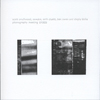 An entire album's worth of field recordings can be a daunting proposition. As an added instrument, they often are mixed into other albums all the time to great effect, but the idea of a full album of nothing else can be intimidating, unless it involves Chris Watson.  However, this five artist/one track performance works splendidly, emphasizing the varying elements of the genre and staying compelling throughout its nearly 18 minute duration.
An entire album's worth of field recordings can be a daunting proposition. As an added instrument, they often are mixed into other albums all the time to great effect, but the idea of a full album of nothing else can be intimidating, unless it involves Chris Watson.  However, this five artist/one track performance works splendidly, emphasizing the varying elements of the genre and staying compelling throughout its nearly 18 minute duration.
In the text that accompanies, which includes one piece from each artist, it's Seth Cluett’s passage that resonates with me the most.His discussion of how field recordings are catalysts for memories is definitely understandable, but they also inspire the imagination.Traditional music entertains, but it doesn’t create visualizations and speculation on how it was recorded like this sort of work does.
For this project, each artist contributed ten minutes of field recordings, with no post production, that are weaved together into a single piece.Admittedly, these aren't seamless transitions:it's pretty easy to tell where one ends and the next begins, but that also helps to emphasize each artist's unique contributions.
For example, the first segment by Scott Smallwood is an obvious recording of water running from a faucet, yet accompanied by a singular dripping sound that mimics a basic, but perceptible rhythm to give a musical counterpoint to the otherwise abstract sounds.Later on a passage of wind chimes serves a similar purpose, putting melodies in amidst the dissonance.
Seth Cluett's contribution also mixes in more traditional "music" moments, with distant bells that, panned and far enough off, sound much more like studio creations than they actually are.Sawako goes for a different facet of field recording:by capturing fragments of ghostly conversations and howling winds, an almost alien landscape is conjured, with only bits of familiarity to be recognized.
The final two pieces, courtesy of Ben Owen and Civyiu Kkliu, opt to use recordings in a completely removed, utterly abstract context.Owen's segment of distant thuds and bangs could be anything, and his later inclusion of lovely, quiet static solidified its greatness for me.Kkliu’s closer sounds like a dying PC power supply, amplified to absurd levels, and some electronic interference/breakdowns thrown in to liven things up and end the work on a noisy note.
The easy criticism to level at artists in this field is that they are not actually "creating" but just "capturing" the world, and I’m sure for some that’s a fair critique, but it does not apply here.None of these recordings sound accidental or haphazard, instead they sound like the result of careful planning and deliberate microphone placement.Whether it's creating tangible visual environments via audio, mutating the known into the unknown, or using everyday sounds to create widely diverging textures, it's all included within this album.
samples:
 
Read More

